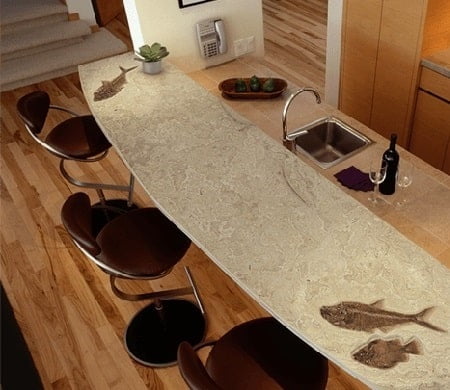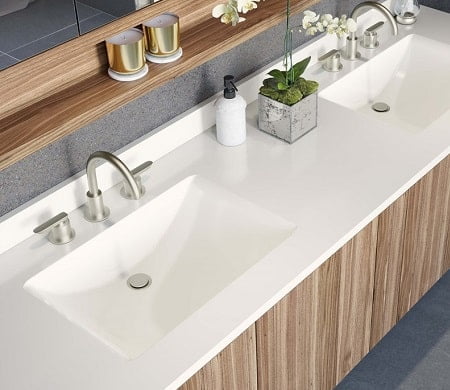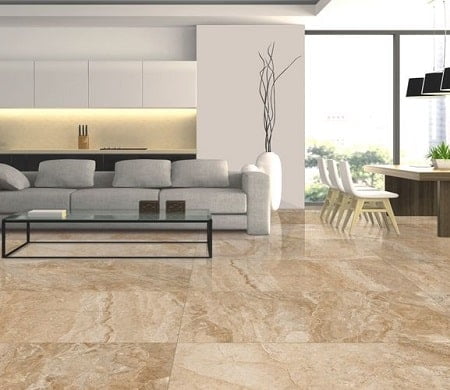Granite and solid surface countertops are very popular materials for kitchen remodels and bathroom vanity tops. The increasing number of homeowners and designers consider these two materials among their first option for countertops installation. Sometime it may be confusing to figure out which one is the right choice between granite and solid surface for both have the set of benefits. So let us take a look on their differences:
Composition:
Granite is a natural stone gotten by mining and cutting slabs from rock quarries. It has beautiful natural colors, so solids or white and well-toned texture.
Solid Surface which is often referred to as “Corian,” is 100% solid with a blend of natural minerals and high performance acrylics. The mixture is combined with fillers, additives and color pigments, and then dispensed into open molds for curing. Its look is controlled, consistent in color and uniform material that cannot accurately duplicate the beauty of natural stone.
Durability:
Granite is highly resistant to being chipped and scraped and even stained because it cannot be affected by extreme temperature so it can take the heat of hot pans. It is one of the hardest and strongest stones found in nature so it is one of a kind. With proper maintenance, granite is expected to last for decades.
Solid surface requires regular maintenance. It is mold and mildew resistant but it is not scratch and heat resistant. It is prone to damage from heat and burns, and can be also harmed by harsh chemicals such as acetone based cleaners, paint removers and drain cleaners.
Cost:
Solid surface comes in variety of prices depending on the type selected. But it is considered to be one of the affordable countertop materials unlike granite.
The cost of granite has a wide range and it is not only determined by cutting and shipping of the stone, installation labor, but also on the distinctiveness of the color and design of the stone chosen. Buying precut granite like tiles sizes is less expensive than buying a large slab.








